N’wendlamuhari
When I think back on this trip, this sighting (literally) stands out above all the others. I was driving along a road somewhere in the Park when I saw two large elephants next to the road. Both were huge, but the tusks of one immediately drew my attention. 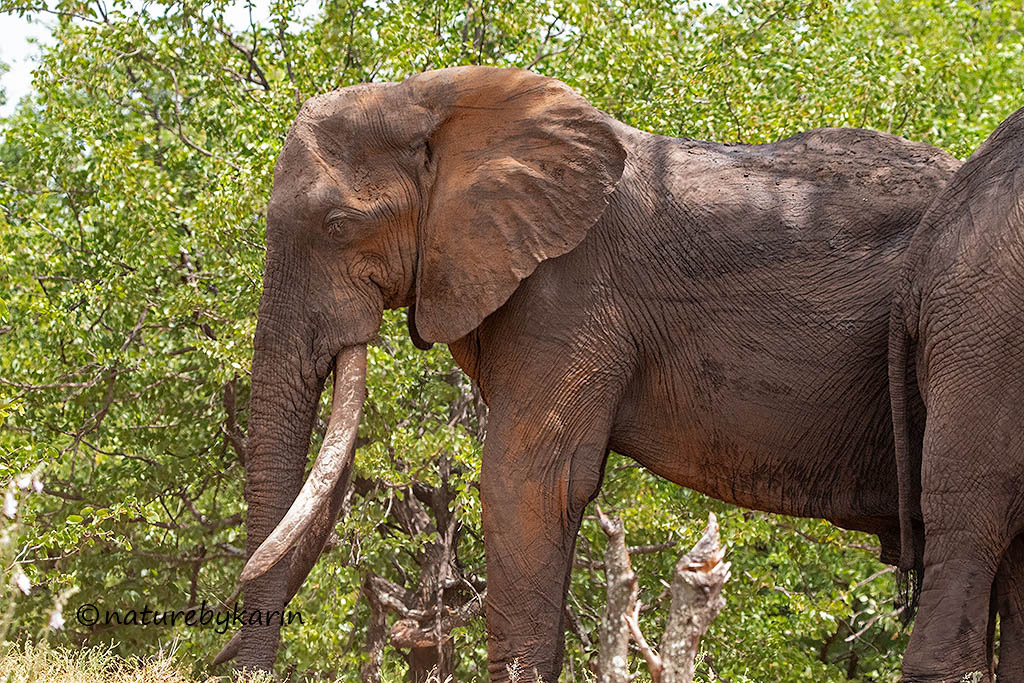
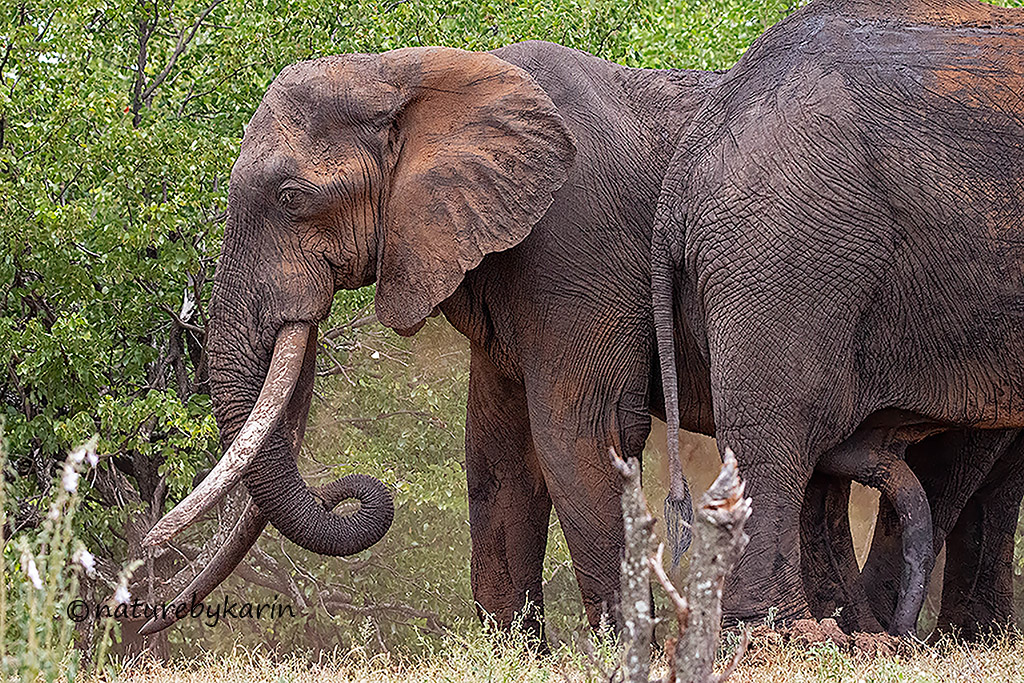
It was the first time I’d ever seen a Tusker in real life, and I literally had goose bumps at the sight of him. I had my suspicions who this guy was, and as soon as I was within signal range from a camp checked the tusker topic on the forum to confirm that it was indeed N’wendlamuhari. He had a bit of a dust bath before strolling across the road with is friend and down to the river for a drink.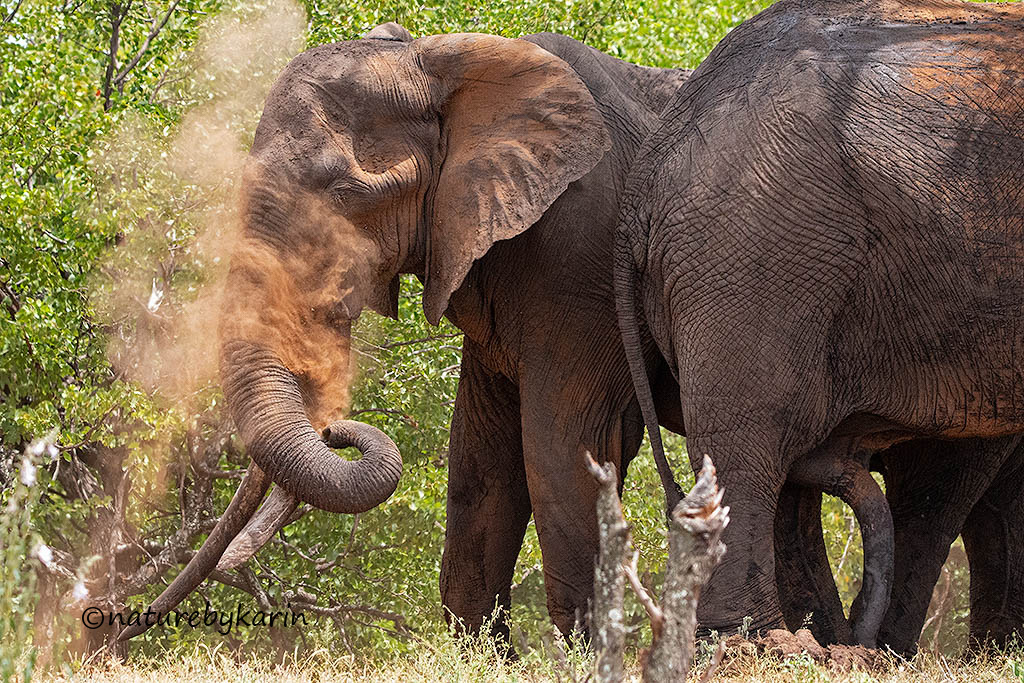

I spent a long time with him and the other bull.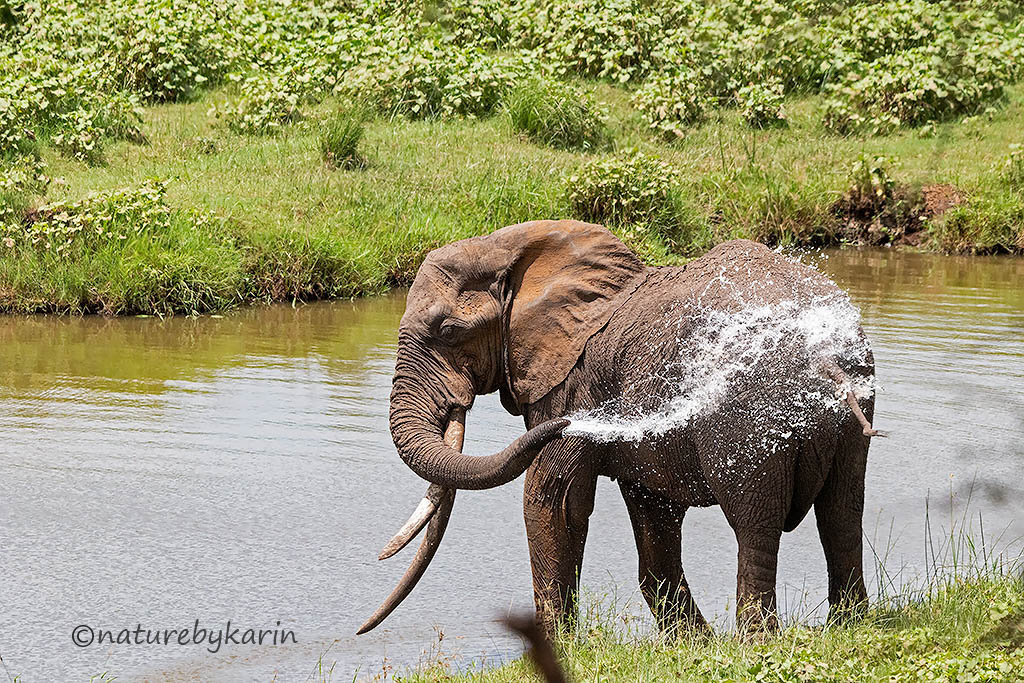
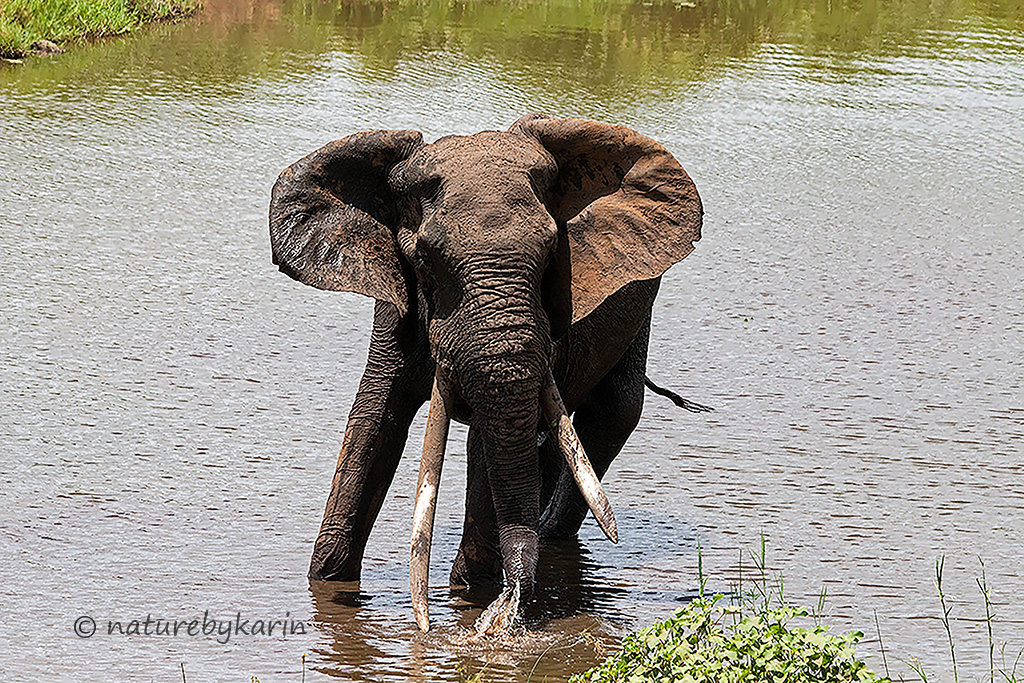
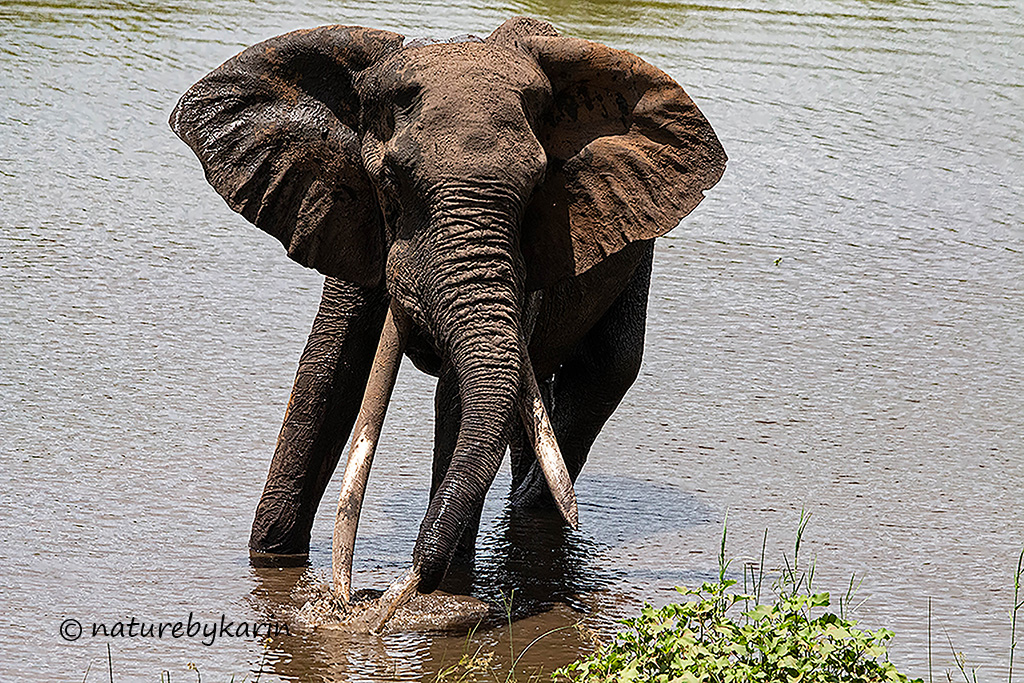
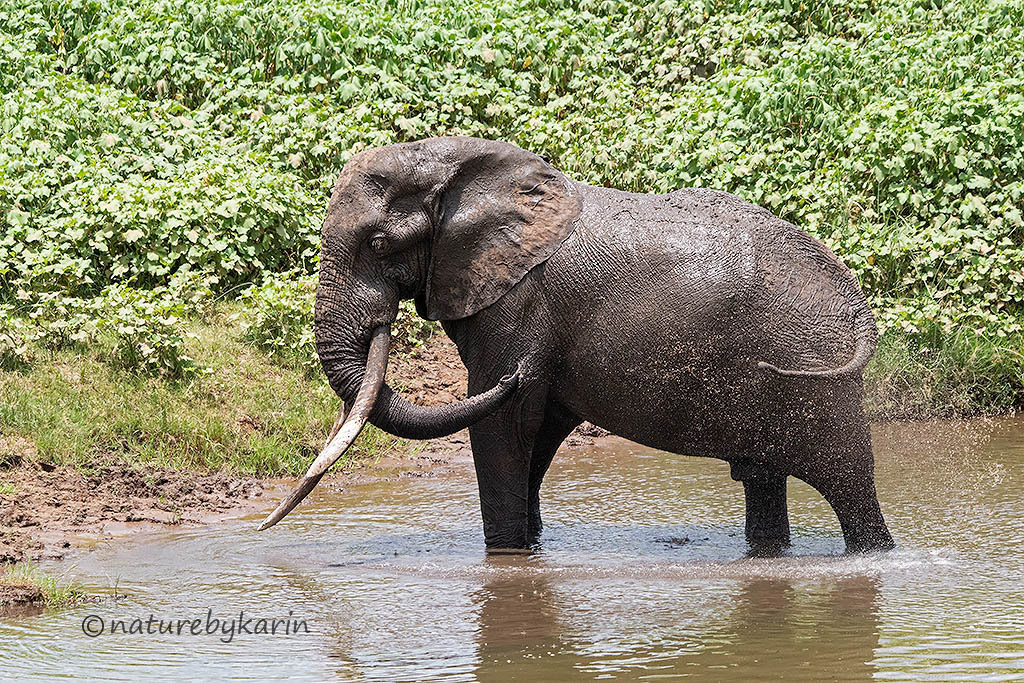
He was so gorgeous and so relaxed. It was amazing.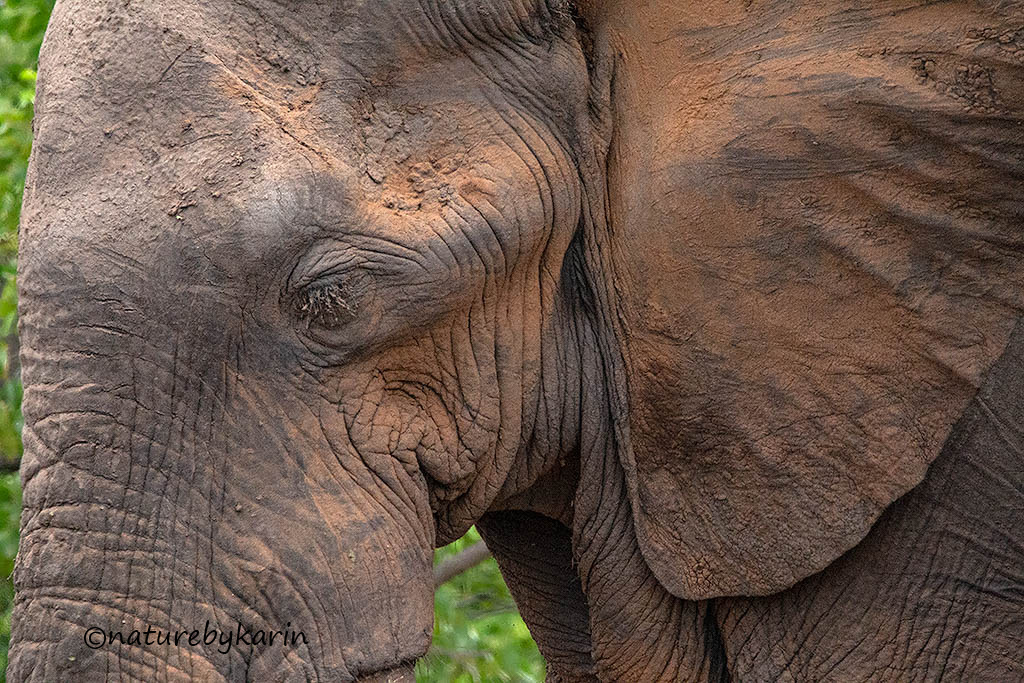 I went to to the Tuskers Museum at Letaba to read more about him. N’wendlamuhari is Shangaan for the Sand River which means “A River Fierce in Flood.” Sightings of him have increased lately, and I am so thrilled that I could see him as well!
I went to to the Tuskers Museum at Letaba to read more about him. N’wendlamuhari is Shangaan for the Sand River which means “A River Fierce in Flood.” Sightings of him have increased lately, and I am so thrilled that I could see him as well!
Nests
Summer months equals breeding time for most birds. I was lucky enough to witness the nesting activities of a couple of species, something I have not been privy to before. The first was a Southern White Crowned Shrike nest. On our morning drive on the S89 we saw the birds in the area. When I drove past there later that day, I spotted the nest. The one parent was sitting on it, and from the demeanor you can see it was a scorching hot day.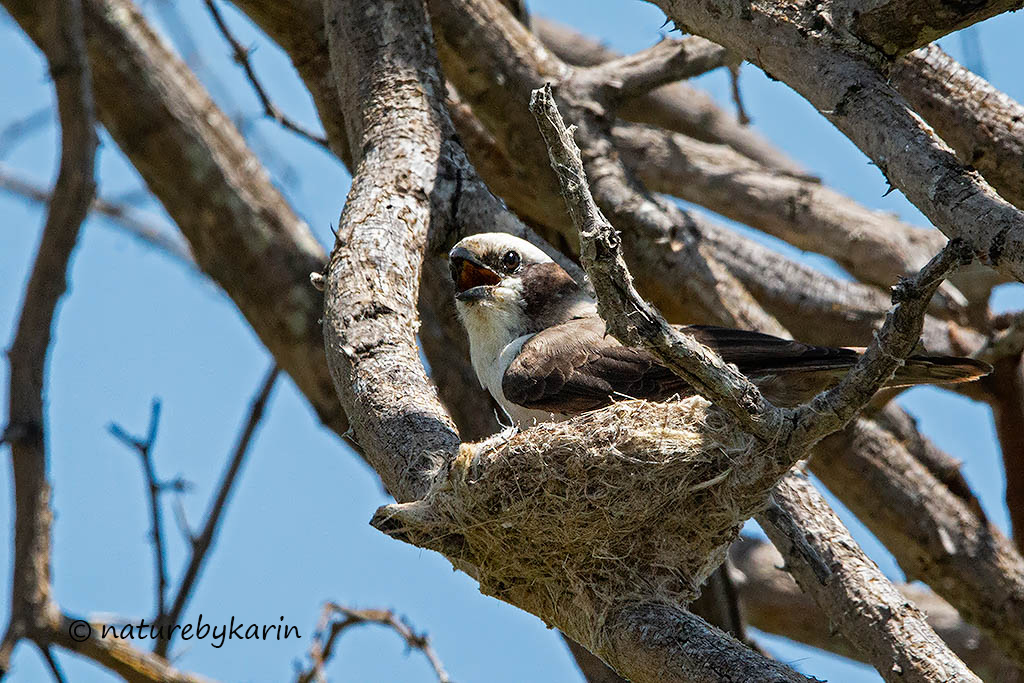
According to my Nests and Eggs book, these birds use spider webs to cover the outside of the nest. January is apparently not it’s usual breeding month. Some other observations in the book indicates that a bit more research may be required on the breeding of these beautiful birds.
On the way from Olifants to Letaba I also found a Lilac-breasted Roller nest in a tree. The adult left the nest soon after I arrived, but despite me waiting for a while, it did not return.
The hole can be 20-45cm deep. Lilac-breasted Roller lay their eggs on leaves and debris at the bottom of the hole. This would have fallen in naturally or placed by previous inhabitants, but not by the Lilac-breasted Roller themselves.
In the Letaba camp a Black-collared Barbet and a Woodland kingfisher had nests in neighboring trees. There was constant activity, and I think the Barbet was still building as I did not see either of the adults bring food. It is amazing how quickly the Barbet and Kingfisher can disappear into a hole that is not much wider than their bodies!
Woodland Kingfishers will often re-use the same nesting site each year – I wonder if the pair nesting here has done so before and will again?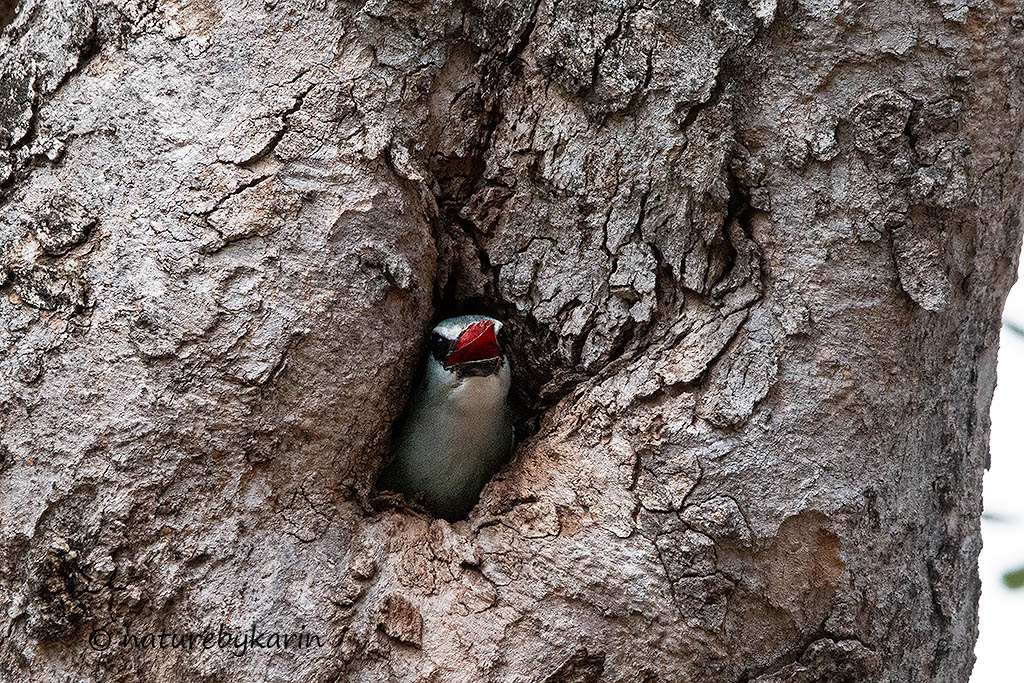
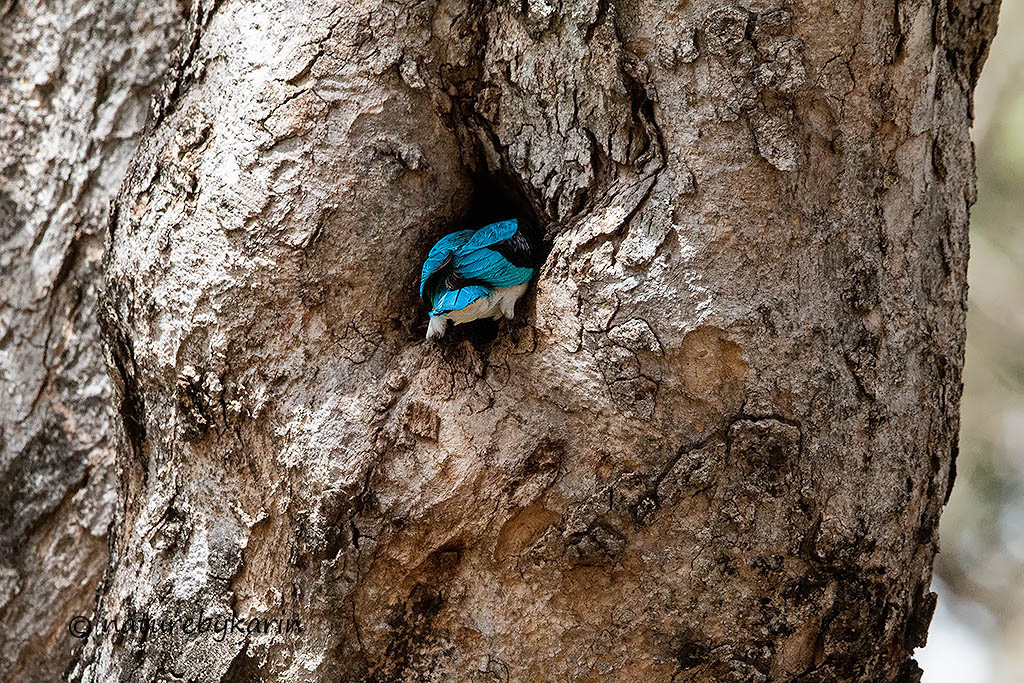
Black-collared Barbets excavate their nests in decaying branches of trees and lay their eggs on a bed of wood-chips.
While having breakfast at the Makhadzi Picnic area I noticed that a Red-billed Hornbill was tending to a nest. The table I was sitting at was quite close to the tree, and I think it was a little skittish at first. But I sat quietly without moving to much, and my patience paid off. It brought a juicy grub to te tree, and a little while later some nesting material.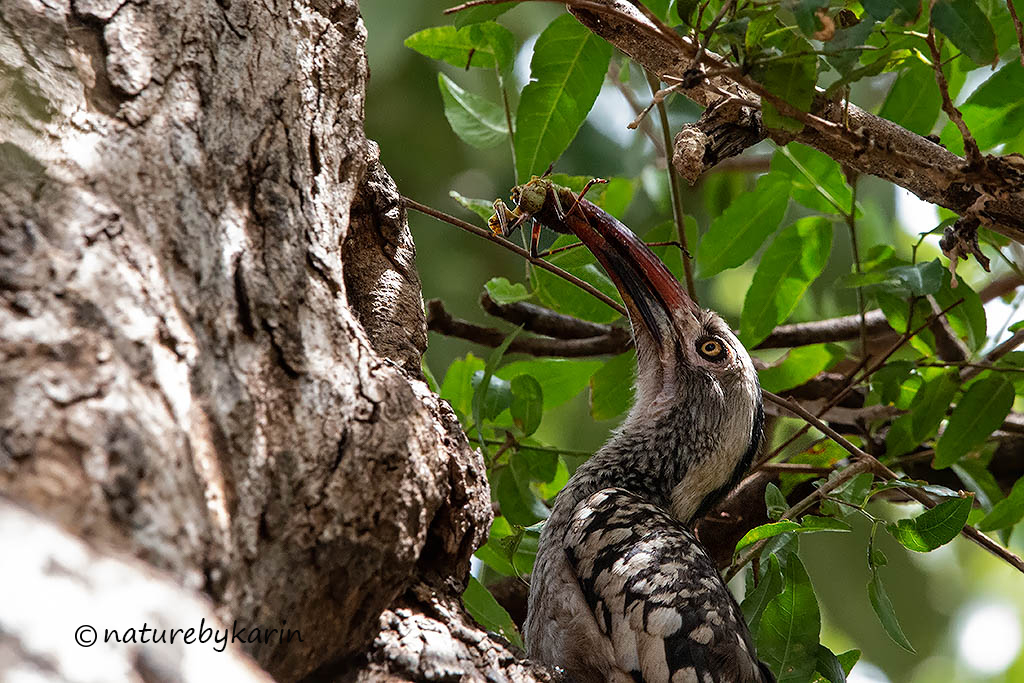

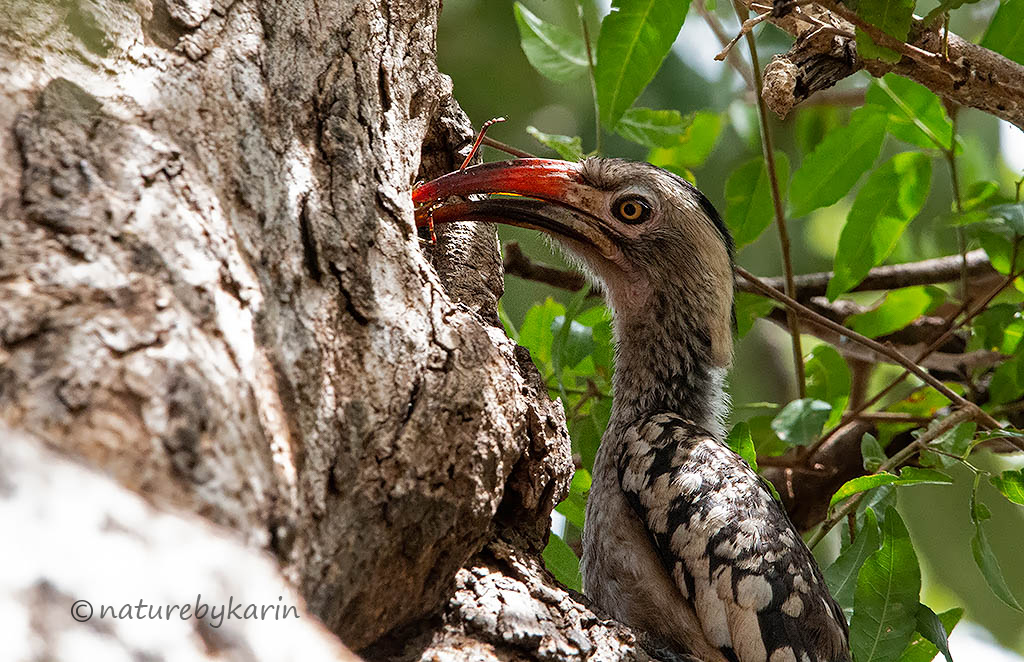
The nest of a Red-billed Hornbill is about half as deep as that of smaller birds such as barbets, kingfishers and rollers. It also has a “chimney” – a hollow above the entrance the female will use for safety. Females close themselves in the nest and the male feeds her through a small opening.
New Roads
I drove a couple of new roads that I’ve never driven before. These were all in the Letaba area and included the S47 to the Mingerhout Dam, the S131 as far as the N’Wanetsi waterhole, the S132 and the S69. These new roads were sadly mostly quiet with very few sightings. But despite this it was great to explore some new areas of Kruger.
Next up: O is for …..